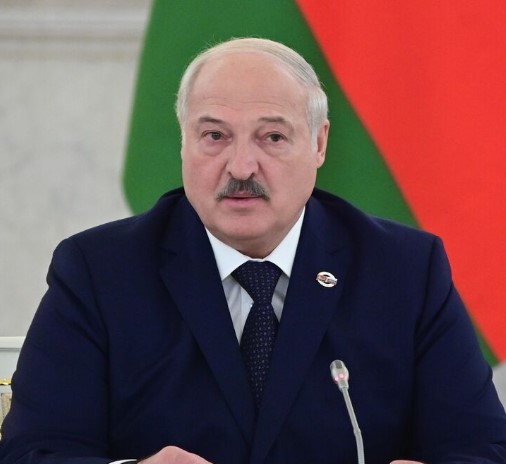Logistics of an uncomfortable world. Sergei Shishkarev on new trade routes

A few years ago, the leading museums in Moscow and St. Petersburg hosted an exhibition of one of the most famous contemporary Russian artists in the West, Ilya and Emilia Kabakov, with the intriguing title “Not Everyone Will Be Taken into the Future…”. The name of the exhibition was given by the installation of the same name, which is a departing car and a platform, on which paintings by artists who did not fall into this very future lay in a heap.
I think this metaphor perfectly conveys the situation in the economy in general and logistics in particular. If now we don’t break out of the familiar, well-knurled and such a cozy world of familiar logistics schemes, we will all remain, like those pictures, on the platform, and the train will leave for the future without us. What do we need to do to get into this future? And most importantly, what is it?
The current year will certainly go down in history as the time when RUSSIA began to create a new configuration of its logistics system, and this configuration will determine its ability to withstand external challenges and determine its own economic policy in the future.
Logistics, for all its seemingly service function in relation to real production, is the basis for the uninterrupted functioning of many economic, social and, step by step, political processes. You can produce as much as you like, but if everything is not delivered from the zones of production to the zones of consumption, there will be stagnation in some, and famine in others. Therefore, it is not surprising that logistics became one of the elements of the sanctions pressure on Russia after February 24. In order to deprive the country of the ability to effectively conduct foreign trade, restrictions were imposed on the entry of Russian ships into foreign ports, a ban on the entry of trucks into the territory of the European Union, the refusal of almost all foreign maritime operators from working with Russian cargo, and increased insurance coverage for those ships who still continue to work with Russia.
Russian foreign trade was more than 90% dependent on foreign ships, so the sea was the first to suffer. In addition, foreign lines owned half of the containers circulating in Russia, and they began to take them away after the cessation of ship calls.
The anxiety and sometimes panic experienced by exporters, importers, logistics operators, and after them the government at the end of February and March after the flow of negative news and the massive refusal of foreign companies to work with Russia, were understandable and justified. And operational headquarters for responding to challenges in logistics, created both in corporations and in the government, showed the seriousness of the situation.
However, three and a half months after February 24, it can be stated that the business has managed to adapt, cope with many challenges, and begin to rebuild supply chains. I see this as the best proof of the effectiveness of private business. Many non-state transport operators, faced with the need for customers to transport goods, despite the restrictions imposed, began to look for the most optimal solutions and found them. Of course, this required additional expenses, administrative and regulatory support from the state. However, the task was solved - the ports did not stop, the cranes did not stop, the trains did not stop at the terminals, the shelves did not become empty, the enterprises did not curtail their work.
Read on RBC Pro Pro How not to fail an interview:Most Frequent Behavioral Issues Articles Pro Smell of Reality:how startups are trying to “flavor” the metaverse Articles Pro Accounting: what documents to print,and which ones not to waste paper Instructions Pro How the "Fear Index" helps to predict the dynamics of the marketusa "Everyone thought he was fumbling." How a “genius investor” from a chat ruined a hundred friendsIt is too early to say that all problems have been solved. In addition, logistics is a very inertial business, the transport infrastructure requires considerable time for its development. In addition, the issue of the cargo base of both imports and exports has not yet been fully clarified. Among the unknowns are the closure of markets for Russian goods, the refusal to supply their goods to Russian markets by Western companies, the volatility of the foreign exchange market, and much more. Therefore, according to our forecasts, both imports and exports are likely to decline at double-digit rates this year.
However, we all saw that over the years of economic reforms, our economic system has acquired the necessary flexibility. And enterprises quickly rebuild and find new markets and new sources of supply. Therefore, despite the fall, we can see from the example of our assets that traffic flows have decreased, but do not dry out. The cargo base is starting to show signs of stabilization. And in general, the general outline of the new Russian logistics system is already being built.
The geopolitical situation around Russia has led to the fact that Europe is practically closed for us. There are many examples of this: Russian cargo faces many problems in European ports, Russian ships have lost the opportunity to call at European ports, European companies are curtailing Russian business. We have made another turn to the East: it is there that the markets that have not been affected by sanctions, partners that do not share European rigidity towards Russia, and suppliers who are ready to replace traditional European ones have remained. The Asian vector in the economy turned logistics flows in the same direction.
In the three months that have passed since the emergence of the reality in which we all now live, only a lazy expert did not talk about the reorientation of logistics flows from sea to land, from Europe to Asia, about the congestion of the Eastern test site and bottlenecks on the approaches to the Far Eastern ports and land crossings on the Russian-Chinese section of the state border.
We propose to take a broader look at this problem. Consider Asia not from a geographical, but from a geo-economic point of view. As a direction where cargo flows from Russia were redirected after a sharp restriction for them in Europe and North America. From this point of view, India, the countries of the Middle East and even Africa can be defined as conditional Asia. Countries located to the south of Russia, the path to which runs perpendicular to the most extended international transport corridor (ITC) West-East. In this case, it is already difficult to overestimate the importance of the ITC North-South. For a number of reasons, it is still much less developed than the West-East, and is not a single integrated complex. And in order to solve the most difficult geopolitical task of becoming the second largest trade artery of the Eastern Hemisphere, the North-South must turn into the most seamless corridor all the way from Russia through Iran to India. In this case, a multimodal route - from Southeast Asia through the ports of India and Iran and further by rail, through the Caspian Sea to Russia, Central Asia, through the Black Sea from Turkey to Russia and Europe - can create real competition for the route through the Suez Canal. In addition, the North-South is routes through the southern Russian ports towards Africa, which, I am sure, will begin to play a more important role in the world economy in the next decade as a consumer market against the backdrop of a growing population of the continent and as a source of cargo base when placing more and more volume of production.
Logistics involves many types of land, water and air transport and many types of containers. But the most acute problem is with its own fleet. If we proceed from the fact that the current state of relations with the West will last, if not decades, then at least years, we should take a course towards creating our own fleet, including a deep-sea fleet in all categories: not only tankers and bulk carriers, where else do we have expertise remained, but also container ships, which Russian shipyards have never built. This will take years, but if there is political will, state support and reasonable protectionism, this task can be quite effectively solved within the horizon of three to eight years. You can, of course, at the first stage use used foreign ships: no one will sell us new ones, and the demand from the largest operators is very high. However, this is not very efficient economically and technologically creates great risks.
But there is no evil without good. I believe that in the end we should get and will get a new logistics system, including land and sea infrastructure, rolling stock, containers and ships under the control of Russian beneficiaries. And even after the inevitable warming of relations in the future, we must learn the right lesson and have a national logistics system independent of the geopolitical situation.
In recent months, I again see that the active and motivated are looking for an opportunity to work. Everyone else is an excuse to justify their failures with external factors. They will definitely not be taken into the future.






























































